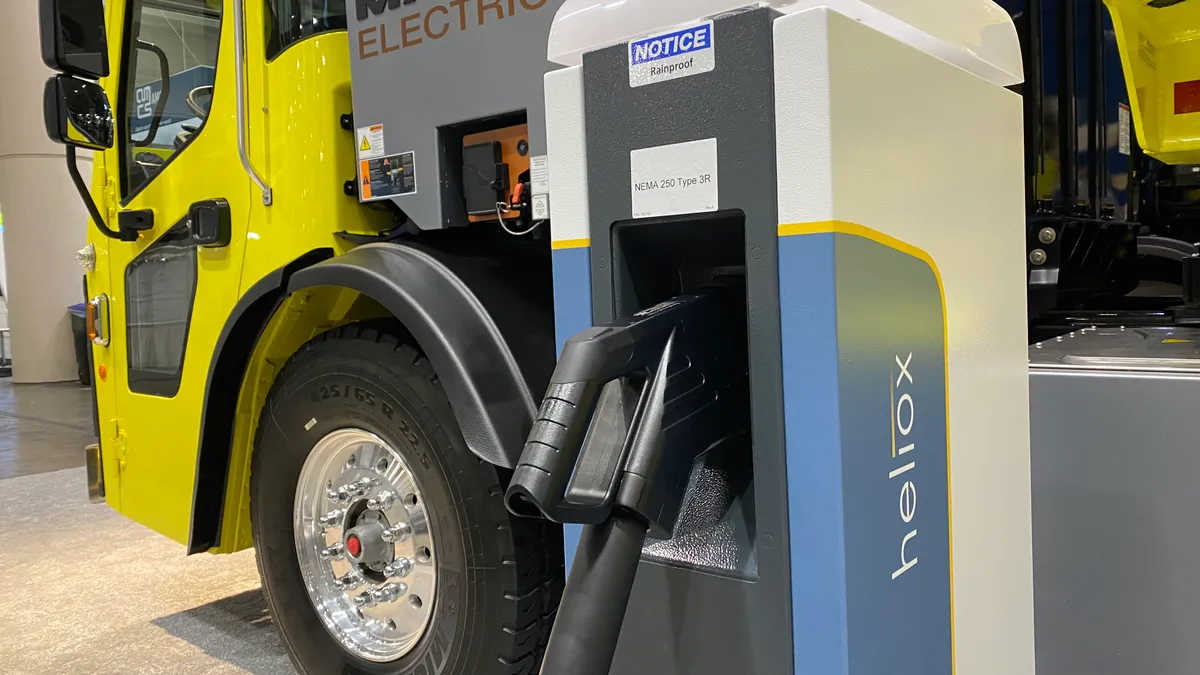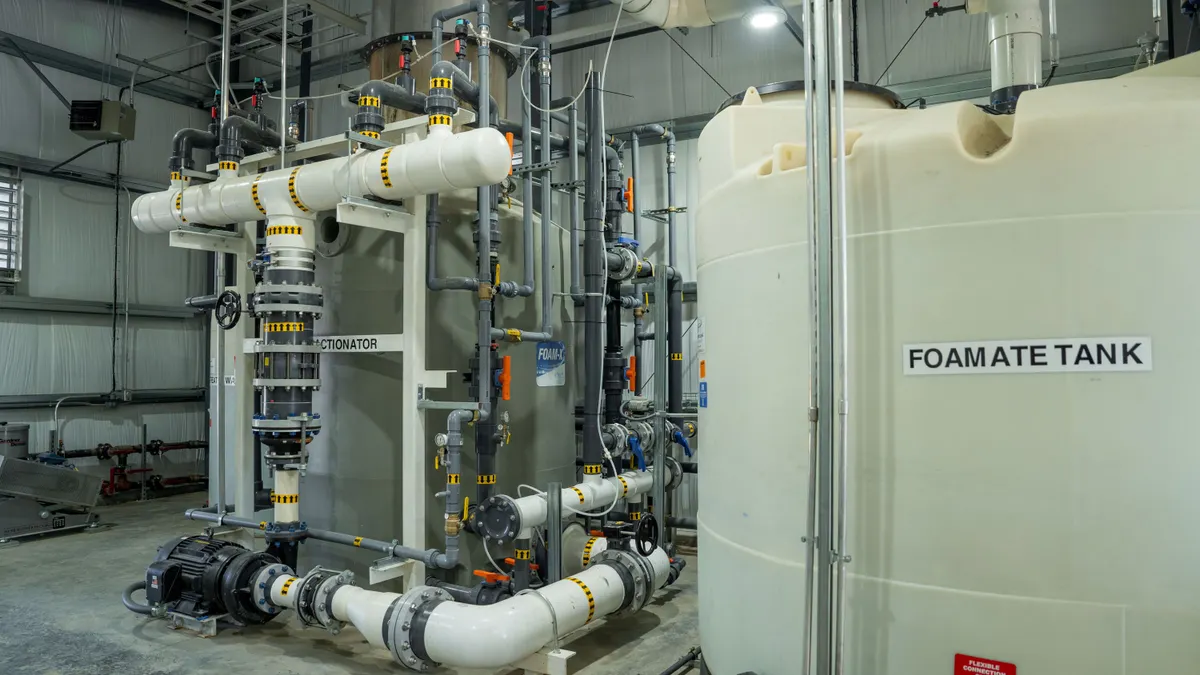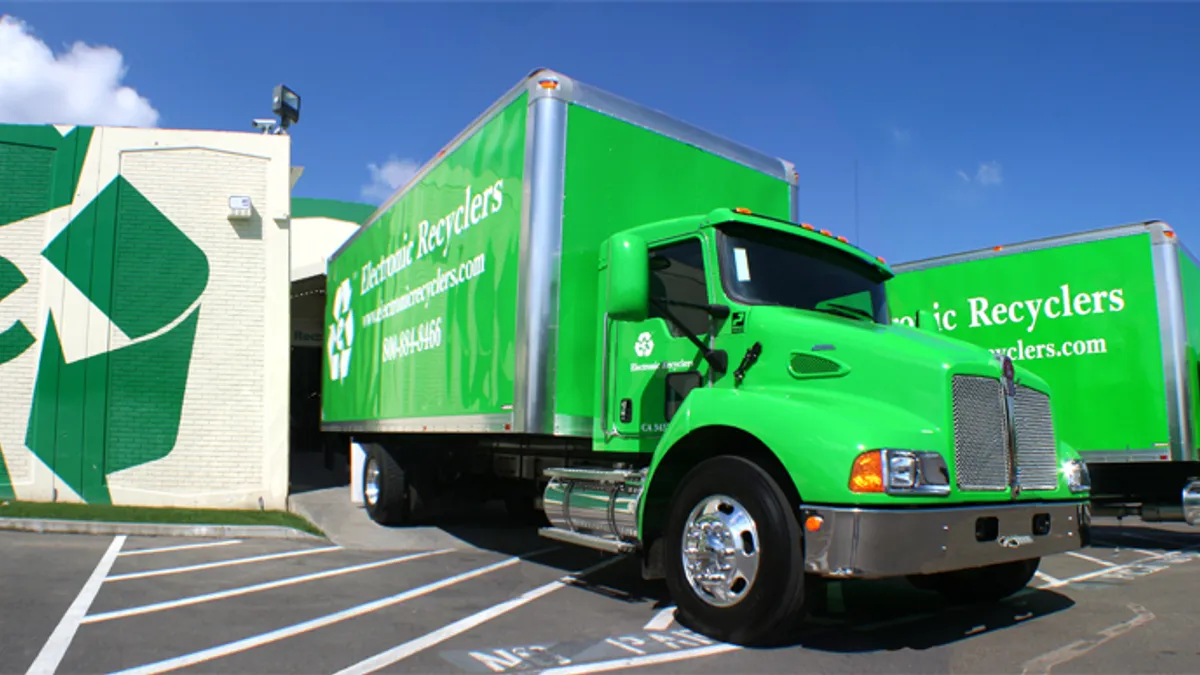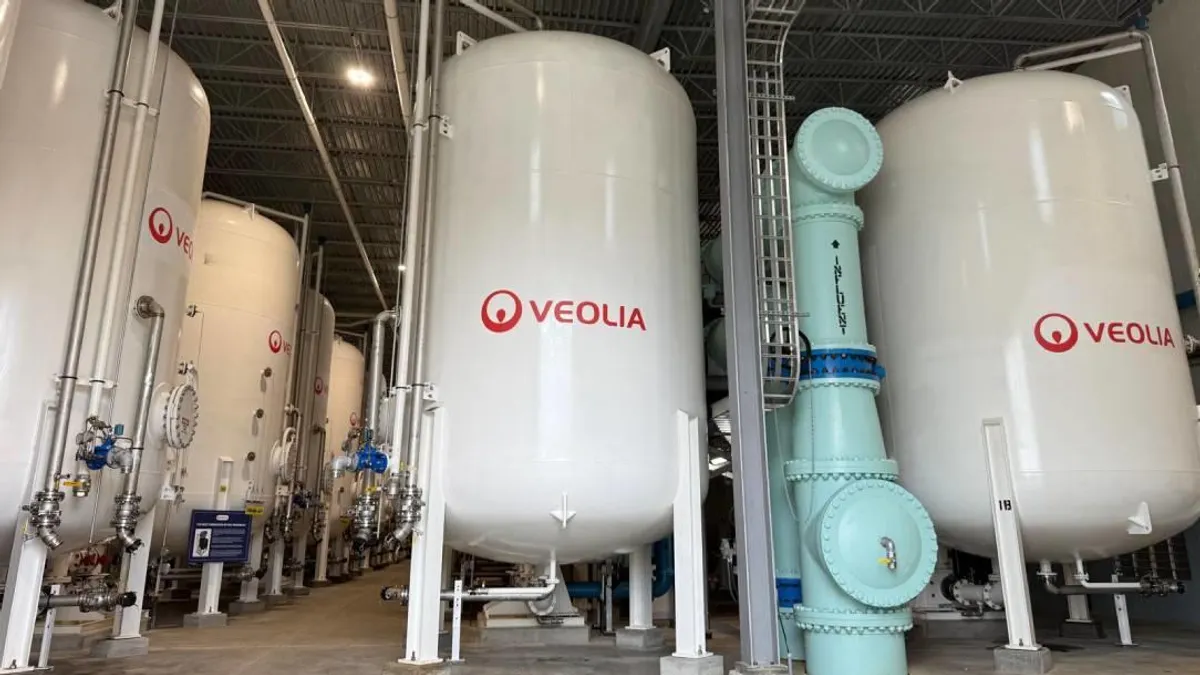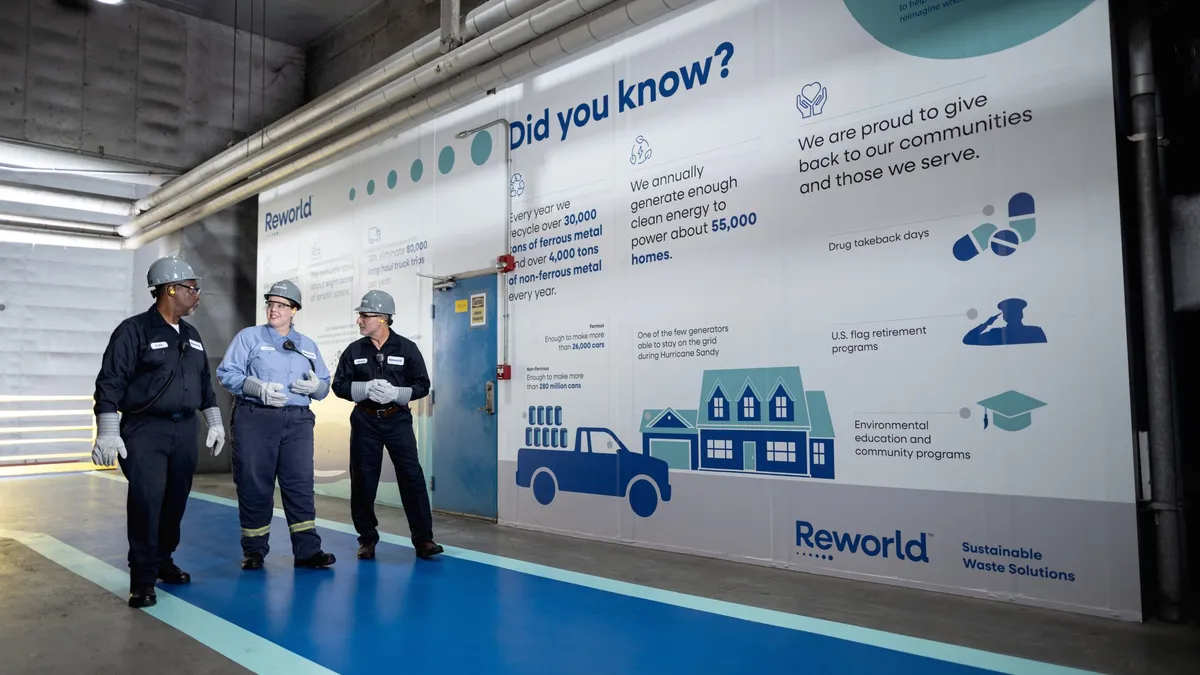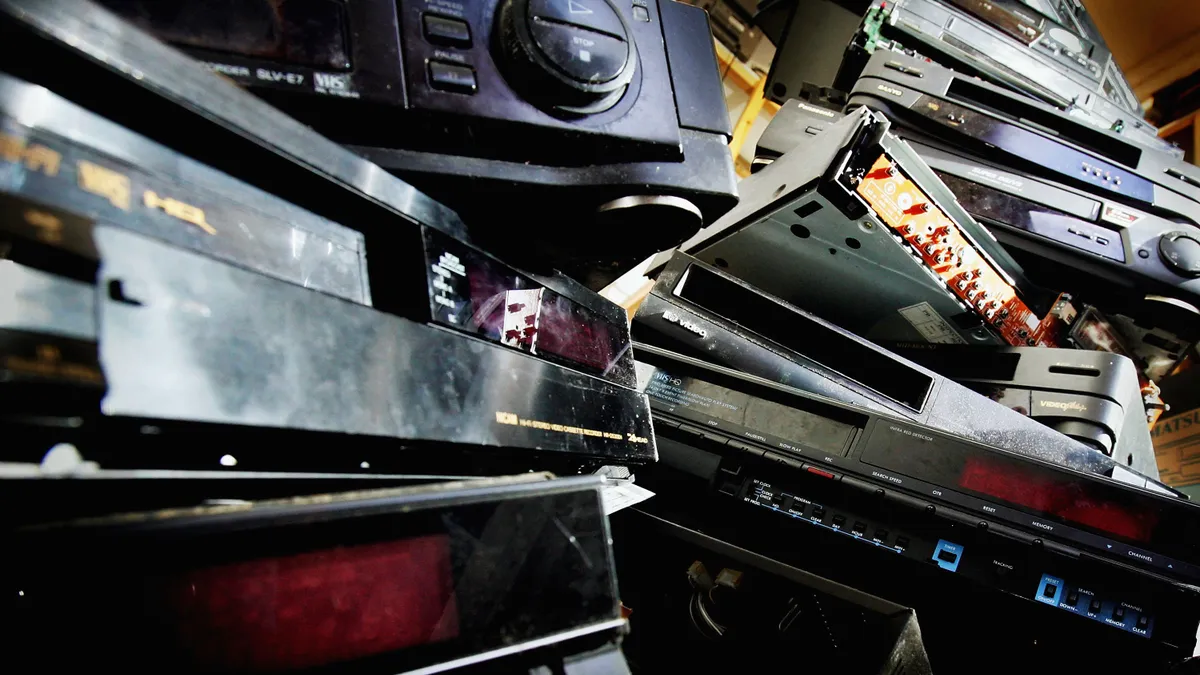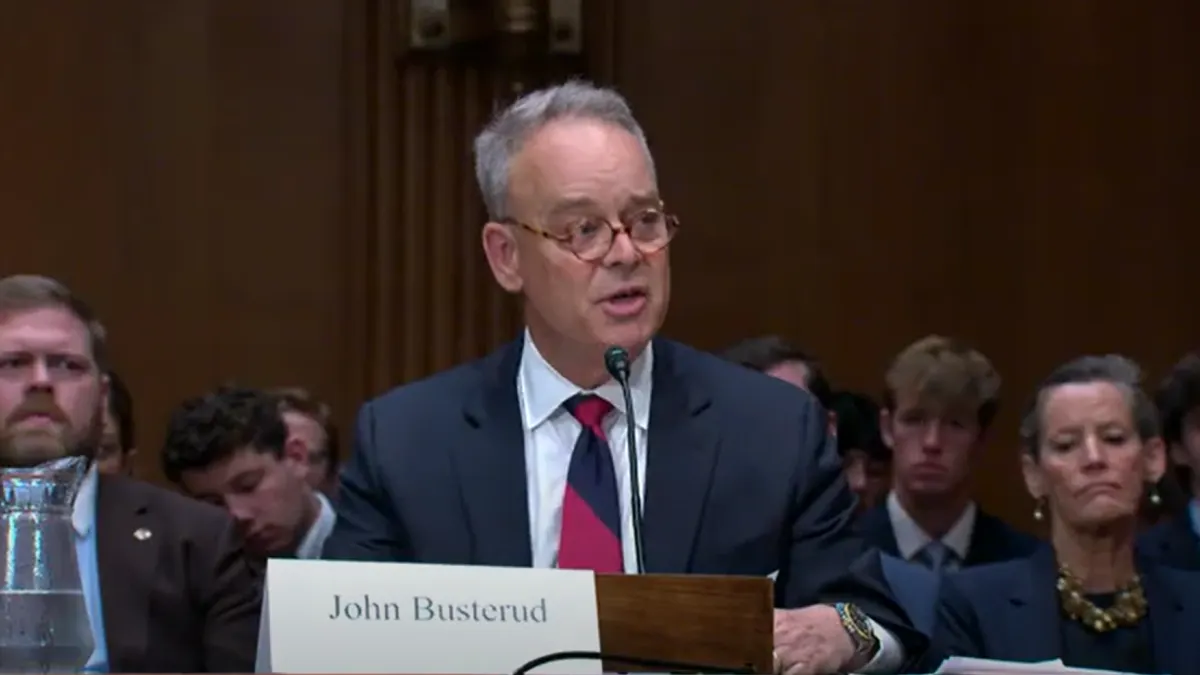The California Air Resources Board’s adoption of the Advanced Clean Fleets rule has put the squeeze on waste haulers who are now on a timeline to buy 100% zero-emission vehicles by 2042.
The haulers are racing for solutions at a time when manufacturers are only just beginning to scale up production of trucks capable of meeting demand. But as orders for battery-electric refuse trucks begin to roll in, many remain concerned about charging infrastructure and the technological advancement necessary to meet the new regulatory deadlines.
“Innovation's hard and it's not a straight line,” Republic Services CEO Jon Vander Ark said at WasteExpo’s investor summit last week. “There are going to be fits and starts and bumps and bruises.”
The timeline approved by CARB on April 28 would require waste and wastewater fleets that previously ran on compressed natural gas to be 10% zero-emission by 2030 and 100% zero-emission by 2042. The timeline is later than for certain other types of fleets, which WM and other members of the waste industry lobbied for because of the investments they made in CNG fleets and infrastructure. Diesel fleets will be gradually phased out as part of the transition.
The rule has been viewed as aggressive by truck fleet operators but necessary by environmentalists and CARB, which noted in its release that trucks account for 25% of California’s on-road greenhouse gas emissions despite comprising 6% of vehicles.
Groups like the Natural Resources Defense Council applauded the move, which was passed at the same time as another emissions-cutting regulation for railroads, as a step forward in decarbonizing transportation.
"This regulation will help drive the transition to cleaner, zero-emission trucks, create good jobs, and reduce pollution from the transportation sector, which is the largest source of greenhouse gas emissions in the state," Guillermo Ortiz, a clean vehicle advocate at the NRDC, said in a statement.
But at WasteExpo, executives with major haulers said the technology of battery-electric trucks is still struggling to meet all of their fleets’ demands.
Ron Mittelstaedt, the newly-returned CEO of Waste Connections, said the electric models he’d seen were twice as expensive, could haul less than 60% of the payload and travel less than 25-30% of the operating distance compared with CNG or diesel trucks.
“When you're talking about those differences, the cost effective percentage is 20-22% of CNG or diesel vehicles,” Mittelstaedt said during the investor summit. “I don't see that that's going to be ready for primetime in a competitive market like Denver or Chicago or Houston anytime soon.”
‘The infrastructure question’
The biggest concern for many companies is new charging infrastructure, something that has caught the attention of both California and the federal government as an urgent need to achieve the nation’s electrification goals.
“The question that needs to get answered is the infrastructure question,” WM Chief Operating Officer John Morris said in an interview. “Having a reliable source to be able to fuel those trucks everyday is something we need to figure out.”
The National Renewable Energy Laboratory identified 166 total charging stations for heavy-duty fleets nationwide in the third quarter of 2022, 101 of which were Level 2 chargers powerful enough to provide 25 miles of range after an hour of charging and 65 of which were DC chargers powerful enough to 100-plus miles of range after 30 minutes of charging.
But where waste haulers are using (and charging) electric trucks, they have yet to do so at scale, said Tim Thornton, vice president and general manager of refuse for Autocar Trucks.
“Some customers are building infrastructure, but they’re not doing it for an entire fleet,” Thornton said.
Republic is one hauler proactively acquiring electric trucks. Vander Ark said the hauler has about 20 zero-emission trucks on the streets and hopes to have 50 next year. Republic typically purchases roughly 1,100 trucks per year. Vander Ark said he’s aiming to make up to 300 of those battery-electric by 2025 and more than half battery-electric by 2028.
Those investments will require additional back-end work with utilities to bring the necessary infrastructure online. Vander Ark said the hauler is spending some of its own money to build out charging infrastructure and has eight sites with “shovels in the ground” to build the electrical capacity.
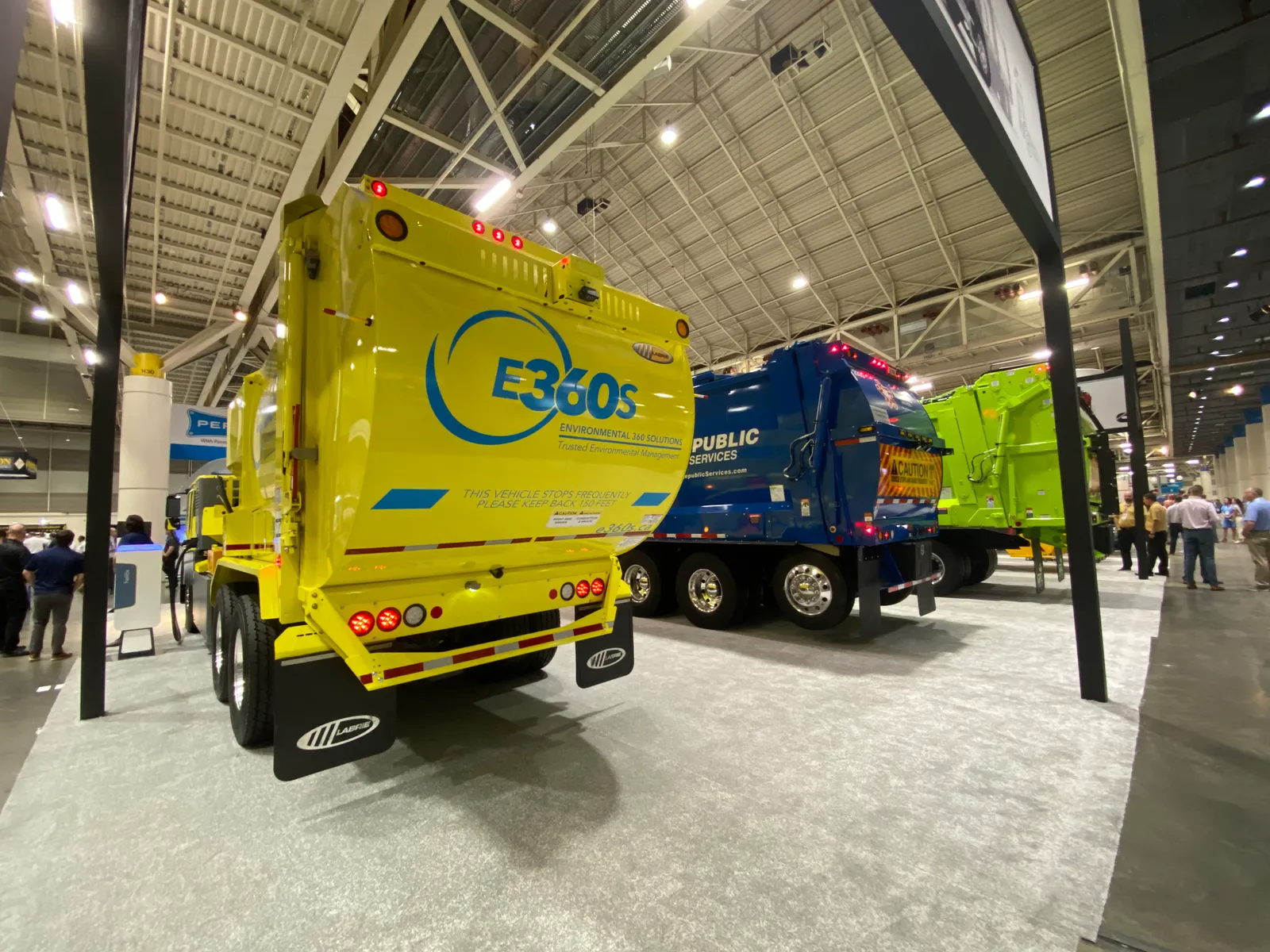
“You can't give every site 200 trucks,” Vander Ark said. “We have a balance of filtering those in, so we kind of start off with 20 locations and then scale up from there.”
California currently accounts for a third of all charging stations in the nation, though the East Coast has recently seen a rapid ramp-up in new charging infrastructure, according to NREL. Vander Ark expects the rollout of Republic’s electric refuse vehicles will follow a similar pattern, meeting the demands of California before shifting to other sites on the East Coast and later filtering into middle America, possibly supplemented by hydrogen fuel cell when the technology becomes available.
But smaller haulers face much greater challenges building out infrastructure, said Veronica Pardo, regulatory affairs director for the Resource Recovery Coalition of California. Those haulers will rely on state and federal funding to finance charging infrastructure and the busy utilities tasked with ramping up electrification for all sectors, not just the waste industry.
“When we talk about Republic, they’ve got the ability to make investments at a larger scale than your smaller fleets,” Pardo said. “When it comes to your smaller fleets, essentially they’re going to have to work with local jurisdictions and communities and work on the rate structure that is going to support the infrastructure that is necessary.”
The California Energy Commission expects to spend nearly $2 billion on electric charging infrastructure for medium- and heavy-duty vehicles between 2021 and 2026, and so far has spent about $950 million, according to a spokesperson.
Not all of that funding goes to the waste industry. The CEC noted the EnergIIZE commercial vehicles block grant program has $183 million available and the Innovative Charging Solutions for Medium- and Heavy-Duty Electric Vehicles program will have $20 million available. Refuse haulers would qualify for those programs, but they would be competing against fleets from other industries.
Besides funding challenges, Pardo said some of the haulers her organization represents have heard of yearslong delays from utilities to get charging infrastructure built, in part due to a backlog of new projects.
CARB acknowledged the challenge in its final rule, allowing operators to request an up to five-year extension in implementing the zero-emission rule if they’re experiencing infrastructure delays. But the rule as written wouldn’t allow those haulers to buy new trucks in the interim, essentially leaving aging vehicles in place rather than replacing them with the next best technology, like CNG, Pardo said.
Meanwhile, vehicle manufacturers need to comply with the Advanced Clean Trucks rule, which similarly ramps up the percentage of zero-emission trucks they must sell in the state of California through 2039. That could leave haulers in an awkward position where they’re stuck with stranded trucks that can’t be replaced as implementation continues, Pardo said.
“The manufacturers themselves have the quotas that they need to meet, so they may very well tell California fleets: ‘I’m sorry, we can't deliver this truck to you,’” Pardo said. “They’re selling them in other states, happily, but in California, they’re telling other states we can’t sell this to you.”
Technological constraints
While pilots are taking off, truck manufacturers present at WasteExpo acknowledged battery-electric vehicles couldn’t yet compete with the capabilities of a CNG or diesel truck. That problem is particularly acute for vehicle range, as vehicles are challenged by heavy payloads, uneven terrain and difficult weather.
“The future isn’t really here yet all the way, so we’ve got a collision course coming,” Jimmy Johnston, president of Autocar Trucks, said in an interview. “We’ve always got to be realistic about the timing.”
Several manufacturers have begun piloting or ramping up production of battery-electric refuse trucks as cities increasingly write EV pilot requirements into their waste hauling contracts. Mack Trucks has been partnering with the New York Department of Sanitation to pilot its LR Electric truck since 2020, and recently received an order for seven more from the city agency.
Meanwhile, manufacturers Autocar and Heil have begun to demo their own Class 8 truck with WM and McNeilus — owned by Oshkosh — has signed on to a long-term deal with Republic Services to pilot and scale up orders of its fully integrated electric refuse collection vehicle.
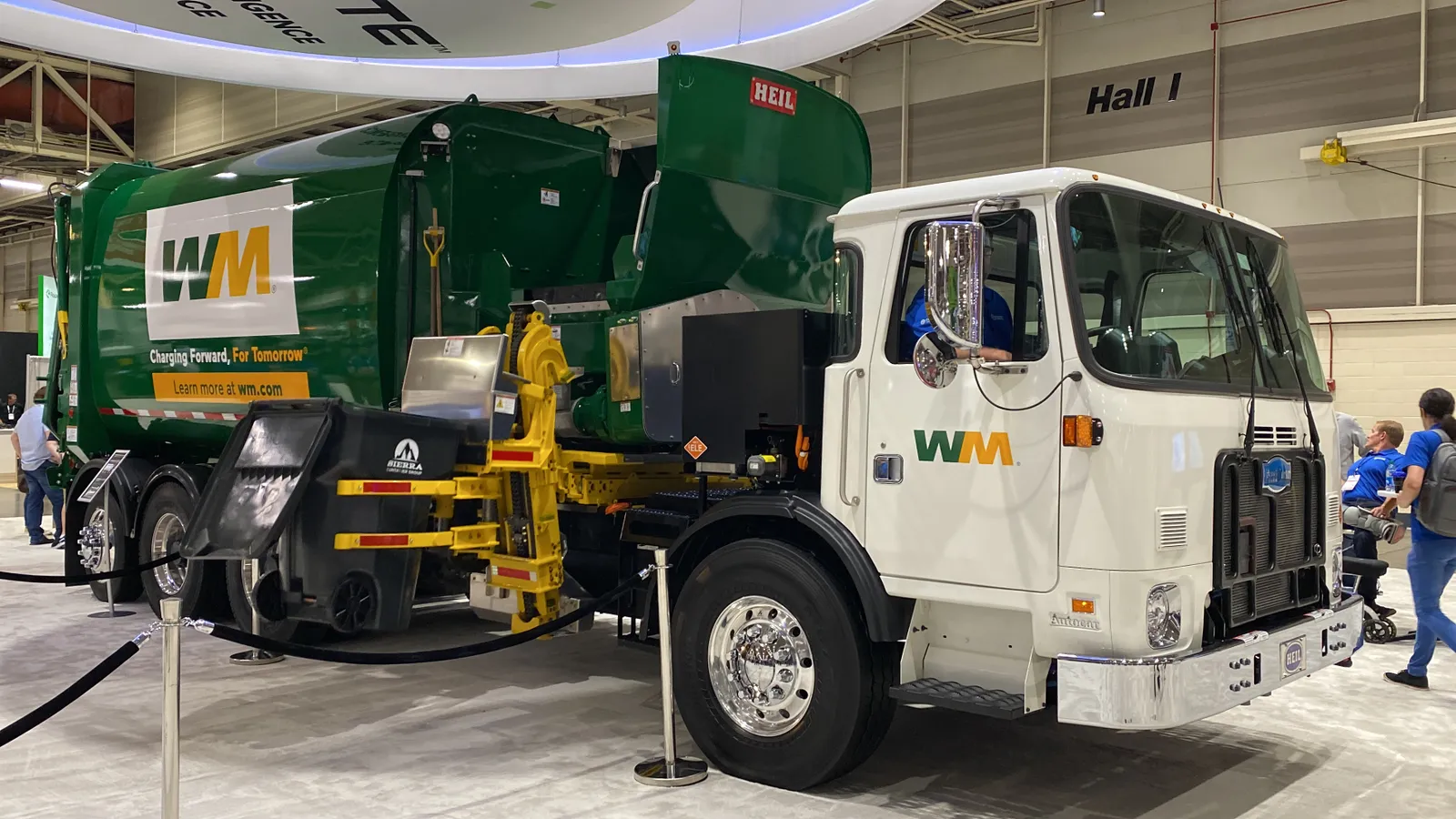
Michael Eastabrook, president and CEO of truck manufacturer Labrie Enviroquip Group, said he anticipates battery-electric trucks will become more common but issues like charging infrastructure will prevent the fueling type from supplanting CNG and diesel completely.
“It's a much more nuanced conversation that needs to be had than our current political environment allows us to have,” Eastabrook said at the investor summit. “They're going to hit a wall at some point if the only route we're going down is EVs, the infrastructure's not going to support it.”
Vander Ark noted that the vehicles Republic is piloting today can reach ranges just under 100 miles, long enough for certain routes but unlikely to meet the demands of more rural communities.
Other haulers have touted longer ranges under ideal conditions, but some have been hesitant to pin a firm number on the charge, as conditions like snow can change the life of a battery. WIN Waste Innovations expects to pilot two electric rear-loader trucks of its own in the Boston area, and CEO Robert Boucher in August said the trucks, which would run on energy generated by WIN’s waste-to-energy plants, could get a six to seven hour range.
Casella Waste Systems is also partnering with Mack to pilot its LR Electric truck in Vermont, in part thanks to state grants. John Casella, founder and CEO of the company, said it was also partnering with Battle Motors, but he believes he’ll need to be selective about which markets get the trucks first.
“It's exciting tech. We're going to continue to pilot it, we're going to continue to help drive it ... but it's got a ways to go in terms of being effective especially in our area in that we're really looking at mountains, the hills,” Casella said.
Supply chain issues also remain a concern for haulers and manufacturers. Patrick Carroll, president of Environmental Solutions Group, said the timeline for delivery of electric vehicles is currently slower than internal combustion engine vehicles. He said that delay has been reduced by months since last year, and new battery manufacturers expected to come online in the U.S. this year could further reduce that lag time. “We do see things starting to get better,” he noted.
Manufacturers typically need multiple years to reach peak production of their electric vehicle models. Once they do, however, they’ll find ready demand from haulers eager to meet new restrictions — 15 states plus the District of Columbia have signed onto a memorandum of understanding to transition medium and heavy duty trucks to zero-emission by 2050, and funding continues to pour into electrification via programs from the Inflation Reduction Act, among others.
What’s more, a rising number of states are directly adopting California’s Advanced Clean Trucks rule, indicating a sea change in EV production and adoption is well underway.
“The anticipation is that the early years will be more difficult, and after that post-2030, we’re going to be rolling,” Pardo said. “That’s the idea, anyways.”
Disclosure: WasteExpo is run by Informa, the owner of Waste Dive's publisher, Industry Dive. Informa has no influence over Waste Dive's coverage.



